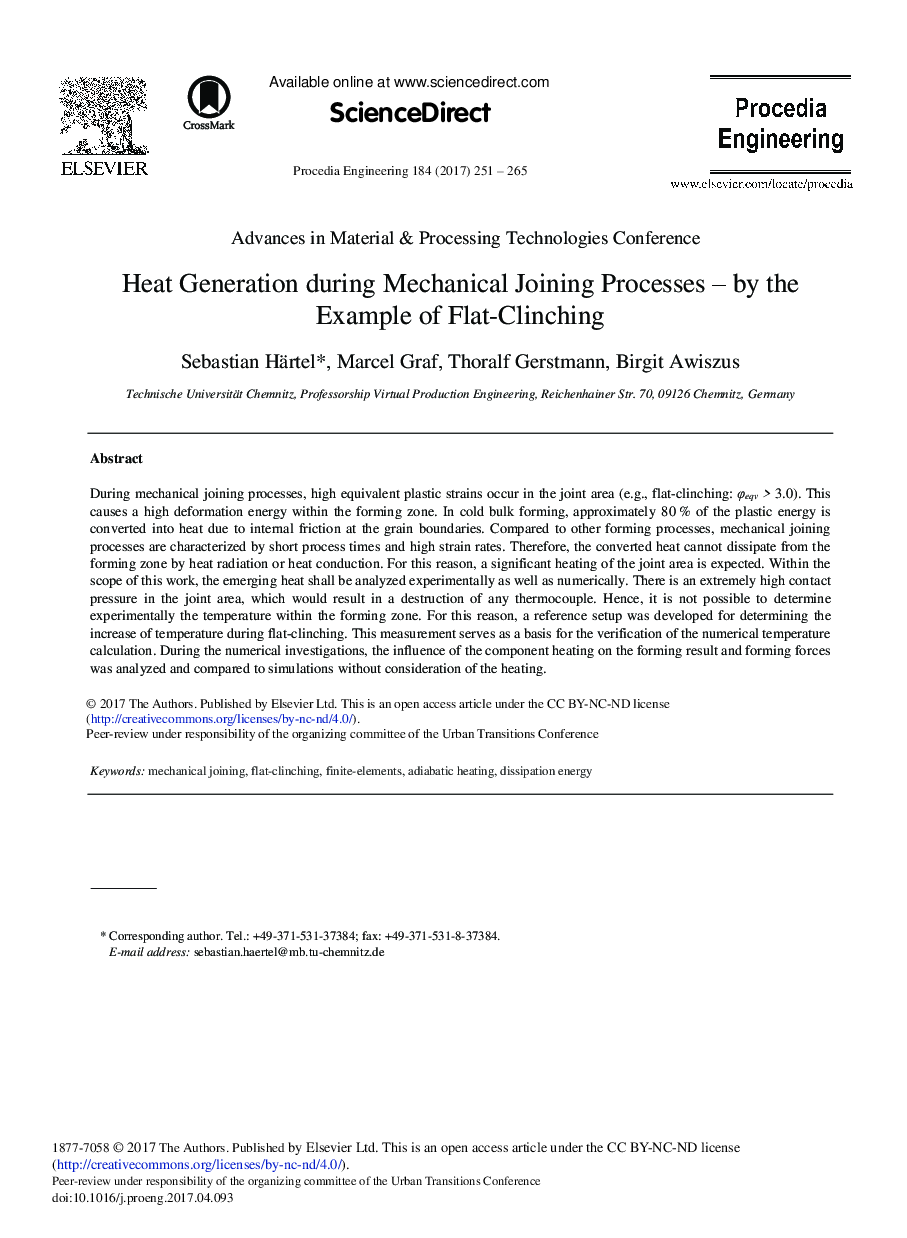| Article ID | Journal | Published Year | Pages | File Type |
|---|---|---|---|---|
| 5029130 | Procedia Engineering | 2017 | 15 Pages |
Abstract
During mechanical joining processes, high equivalent plastic strains occur in the joint area (e.g., flat-clinching: Ïeqv> 3.0). This causes a high deformation energy within the forming zone. In cold bulk forming, approximately 80% of the plastic energy is converted into heat due to internal friction at the grain boundaries. Compared to other forming processes, mechanical joining processes are characterized by short process times and high strain rates. Therefore, the converted heat cannot dissipate from the forming zone by heat radiation or heat conduction. For this reason, a significant heating of the joint area is expected. Within the scope of this work, the emerging heat shall be analyzed experimentally as well as numerically. There is an extremely high contact pressure in the joint area, which would result in a destruction of any thermocouple. Hence, it is not possible to determine experimentally the temperature within the forming zone. For this reason, a reference setup was developed for determining the increase of temperature during flat-clinching. This measurement serves as a basis for the verification of the numerical temperature calculation. During the numerical investigations, the influence of the component heating on the forming result and forming forces was analyzed and compared to simulations without consideration of the heating.
Related Topics
Physical Sciences and Engineering
Engineering
Engineering (General)
Authors
Sebastian Härtel, Marcel Graf, Thoralf Gerstmann, Birgit Awiszus,
